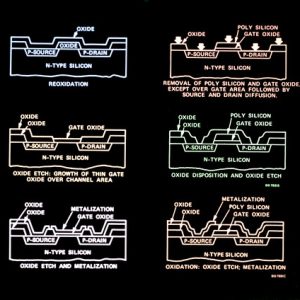The Difference Between CWDM and DWDM
Dense wavelength-division multiplexing enables enormous amounts of data to flow over optical fiber, multiplying its bandwidth. But it’s a complex system and requires specialized installation, testing, and maintenance practices.
VIAVI helps network technicians thrive with portable, self-tuning DWDM modules that eliminate extra steps and reduce human error during deployment, upgrade, and maintenance.
OptiWorks’ Ultra-Compact CWDM-DWDM
CWDM and DWDM are critical elements of a network that can be used in a variety of applications, from data centers to long-haul connections. However, it is important to understand the difference between these two technologies before making a decision.
DWDM is ideal for applications with high-speed, long distance transmissions that require more channels and a higher capacity. Unlike CWDM, DWDM uses more closely spaced wavelengths that allow a greater number of channels to be transmitted simultaneously over the same optical cable. Moreover, DWDM systems can support terabit-level capabilities if the number of channels and data speeds are appropriate for a specific network design.
In order to maximize fiber capacity, DWDM utilizes a multiplexer to separate signals into individual channels and transmit them over dark fiber pairs. This allows organizations to expand their data transmission capabilities without having to lay more fiber and thereby reduce costs. DWDM can also be used in conjunction with EDFA, which amplifies multiple wavelengths at the same time, allowing enterprises to increase their data capacity even further.
When deciding whether CWDM or DWDM is right for your organization, it is crucial to analyze your present and foreseeable data needs. For example, if your organization requires high-capacity connectivity within a building such as in the case of data centers, CWDM is a cost-effective solution. Alternatively, if you anticipate high-speed, long-distance connectivity in the near future, then DWDM would be a better choice because of its scalability and ability to handle terabit-level data speeds.
OptiWorks’ Ultra-Compact CWDM-DWDM solutions are designed to improve optical performance and minimize power dissipation. They are based on Corning’s free-space optical platform, featuring compact coarse wavelength division multiplexers and demultiplexers. The modules provide a density of up Portable Compact DWDM to 16 channels in a package less than one-fourth the size of conventional CWDM systems, providing superior optical performance at an affordable price point.
OptiWorks’ Ultra-Compact 100GHz/200GHz DWDM
As networks expand to accommodate higher capacity applications, the need for efficient and capable optical fiber data transmission technologies has grown. One of the most effective ways to meet those demands is by deploying Dense Wavelength Division Multiplexing (DWDM) systems. DWDM is a multi-channel technology that integrates and multiplexes various signals into a single fiber. This is accomplished by transmitting a series of wavelengths (colors) at the same time over an optical fiber, allowing for a large number of channels to be simultaneously carried.
Compared to its predecessor, Coarse Wavelength Division Multiplexing (CWDM), DWDM can transmit a greater amount of information simultaneously over a shorter distance. While CWDM uses wide-range channels with a 20 nm channel spacing within the 1550 nm C-Band, DWDM utilizes closely spaced wavelengths (0.8 nm or less apart) to transmit multiple channels over a single optical fiber.
The advantage to DWDM over CWDM is that it Network Server is much more scalable, enabling telecommunications providers to support terabit-level capabilities on their core network. For this reason, DWDM is commonly used in long-haul and metropolitan applications.
In addition to the scalability, DWDM offers several other advantages over conventional optical transport technologies. For instance, DWDM can leverage Erbium Doped-Fiber Amplifiers (EDFAs) to overcome fiber span loss and extend communications over long distances. Moreover, because DWDM is an open system, it can easily be upgraded to support emerging protocols as needed.
VIAVI is committed to supporting the expansion of DWDM across all types of networks with innovative test, inspection and certification solutions. These solutions include portable DWDM testers that allow technicians to quickly and accurately inspect and verify all components of a passive DWDM system including the MUX and DMux devices prior to and during installation, as well as end-to-end verification of a complete DWDM network.
OptiWorks’ Ultra-Compact CWDM-CWDM
The ability to transport enormous amounts of data across a single network fiber common link using distinct wavelengths is the key to creating an extremely high-capacity, low-cost, multi-service optical platform. This allows service providers to increase capacity within existing networks and to add new services such as Ethernet, TDM, SONET, etc. OptiWorks’ Ultra-Compact CWDM-CWDM multiplexers/demultiplexers (CDWDM) are ideal for these applications.
To overcome these limitations, a CDWDM system uses multiple-band filters with different wavelengths to separate light into separate paths. It is then transmitted through a single optical fiber to the subscriber. This approach can reduce the number of devices needed by up to tenfold compared with traditional three-port filter device-level integration. This provides cost, performance and environmental stability advantages over alternative solutions.
A critical challenge in the development of CDWDM is ensuring the accuracy of the central wavelength frequency of each filter. To achieve this, a robust AOI tuning method is employed to control the wavelength at the filter’s center. This ensures that the central wavelength is accurately controlled over the module’s lifetime.
This approach enables a significant improvement in both the overall insertion loss and the isolation of each individual channel, as well as the overall packaging box dimensions. It also enables the use of lower cost components, including amplifiers, and allows for the potential future expansion to higher channel counts without the need to vacate any channels.
While unamplified CWDM can transport up to 10 Gigabit Ethernet and 16G Fiber Channel, it is quite unlikely capacities will increase beyond this level in the near future. In contrast, DWDM supports all current and upcoming high speed protocols such as 100G and 400G, making it a much more future-proof technology. The Ciena 6500 Packet-Optical Platform offers the full spectrum of CWDM and DWDM solutions, from edge to core, to maximize efficient network scaling from access to backbone.



